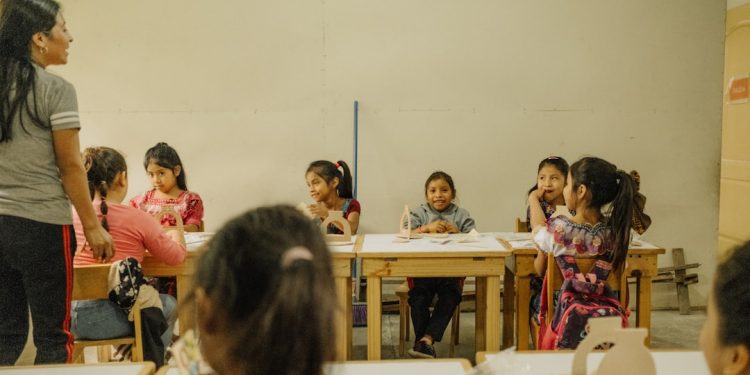No products in the cart.
The Economic Case for Inclusive Education
Inclusive education for women and minorities is a powerful driver of economic growth. Discover the data and policy recommendations.
Washington, D.C., USA — Inclusive education is not just a moral imperative; it is an economic necessity. As nations grapple with the challenges of economic stagnation and inequality, the benefits of educating women, minorities, and underprivileged groups become increasingly clear. Research shows that inclusive education systems can significantly boost GDP and foster innovation.
According to a 2020 report from the World Bank, providing equal education opportunities can increase a country’s GDP by up to 20% over the lifetime of a cohort of students. This is particularly relevant in developing countries where educational disparities are stark. For instance, in Sub-Saharan Africa, where the education gender gap remains wide, closing this gap could result in an economic boost of approximately $112 billion annually by 2025.

Furthermore, the United Nations Educational, Scientific and Cultural Organization (UNESCO) estimates that every additional year of schooling for girls can increase their future earnings by up to 20%. This not only enhances individual prospects but also contributes significantly to national economies. Economies thrive when all members of society can participate fully.
The Impact of Inclusive Education on Innovation
Beyond economic growth, inclusive education plays a crucial role in driving innovation. A diverse workforce fosters creativity and new ideas. McKinsey & Company found that companies in the top quartile for gender diversity are 21% more likely to outperform their counterparts in profitability. This correlation extends to ethnic diversity as well, with companies in the top quartile for racial and ethnic diversity outperforming those in the bottom quartile by 33%.
The Impact of Inclusive Education on Innovation Beyond economic growth, inclusive education plays a crucial role in driving innovation.
In the tech sector, for example, companies like Google and Microsoft have made significant investments in inclusive education initiatives. These companies recognize that a diverse talent pool leads to better problem-solving and innovation. By supporting STEM education for underrepresented groups, these corporations not only fulfill corporate social responsibility goals but also cultivate a workforce that can drive technological advancements.
Policy Recommendations for Inclusive Education
To harness the economic benefits of inclusive education, policymakers must implement strategic reforms. Here are several recommendations:
- Increase Funding for Underprivileged Schools: Governments should allocate more resources to schools in low-income areas. This includes funding for infrastructure, teaching materials, and training for educators.
- Promote Gender-Sensitive Policies: Policies that address barriers to girls’ education—such as early marriage and cultural biases—are essential. Programs that provide scholarships or stipends for girls can significantly increase enrollment rates.
- Encourage Community Engagement: Involve local communities in educational initiatives. This can help to ensure that educational programs are culturally relevant and address the specific needs of the community.
- Support Adult Education and Lifelong Learning: Investing in adult education programs can help marginalized groups acquire the skills they need to participate in the economy effectively. Lifelong learning initiatives can also ensure that the workforce remains adaptable to changing job markets.
Global Case Studies of Success
Countries that have prioritized inclusive education have seen tangible economic benefits. For instance, Rwanda, which has made significant strides in gender equality in education post-genocide, has seen its GDP grow by an average of 8% annually since 2001. This growth is attributed to the increased participation of women in the workforce, fueled by educational advancements.
Similarly, in Bangladesh, the government’s efforts to promote female education through initiatives like the Female Secondary School Stipend Program have resulted in a marked increase in the number of girls completing secondary education. As a result, the country has experienced a notable rise in female labor force participation, contributing to economic growth.
Challenges Ahead
Despite the clear benefits, challenges remain. The COVID-19 pandemic exacerbated educational inequalities, with marginalized groups facing the brunt of school closures and limited access to online learning resources. According to UNICEF, an estimated 24 million children may drop out of school due to the pandemic. This setback could have long-term consequences for economic growth.
Moreover, in many countries, systemic barriers continue to hinder access to quality education for certain groups. Addressing these issues requires a concerted effort from governments, NGOs, and the private sector.
Support Adult Education and Lifelong Learning: Investing in adult education programs can help marginalized groups acquire the skills they need to participate in the economy effectively.
Looking Forward: A Call to Action
As we move toward a post-pandemic world, the need for inclusive education is more pressing than ever. It is not merely an educational issue; it is an economic strategy that can transform societies. By investing in the education of women, minorities, and underprivileged groups, countries can unlock their full economic potential.
Policymakers, educators, and business leaders must collaborate to create inclusive educational frameworks that promote equality and innovation. This is not just an investment in the future of individuals but a strategic investment in the future of economies worldwide.











